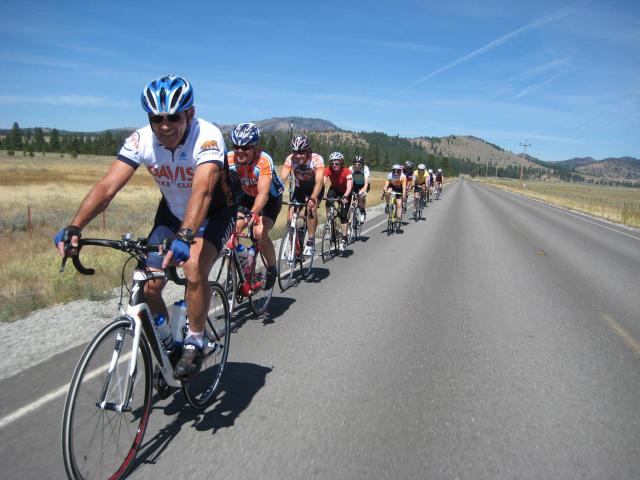A “pace line” is a linear group of cyclists all drafting off the lead rider. Rotating the pace line is something discussed later, here we’ll talk about basic rules for pace lines. Not doing these things, is distracting at best, hazardous all other times. This is a topic that has countless components. We’ll begin with overview topics, then get into detailed examples in later publishing.
Everything a lead cyclist does impacts all the trailing cyclists. Picture watching a locomotive leaving a train yard with a long line of cars. The locomotive begins movement from a dead stop. Seconds later, the local is moving at a slow speed, but moving. Now, picture yourself at the end of the train when the locomotive starts moving. The end car won’t move, for as much as 3-5 seconds, depending on the length of the train.
The same is true for a bicycle pace line, only more so. Unlike a train, a bike pace line is not connected, it’s each rider’s reaction time that causes the pace line to move forward in an orderly fashion. Bike rider reaction time is much slower than the transfer of mechanical energy down a long line of train cars. Remember this analogy, it’s critical to everything about pace line safety and etiquette.
While in a pace line, every movement you initiate is done slow and smooth, or S&S for short. An emergency is the only accepted exception. As a lead rider, when you want to accelerate, do it slow and smooth, reducing speed for an approaching turn or potential, same thing. Slow and smooth. Why? Riders behind you must react to your initiative. Maybe you want to step out of the pace line, fix your shorts, take a look at a rattling bike pump, tell everybody your stepping out (Item One, Communication) and then make your movement smoothly and slowly.
If you act S&S, the pace line re-acts (reacts) the same way, keeping the pace line together in the proper spacing. Much more ahead on specific examples when to act S&S.
